Leica Minilux Zoom
$900.00
【N MINT +Case】 Leica Minilux Zoom 35mm Point & Shoot Film Camera From JAPAN
The Leica Minilux Zoom is a compact 35mm film camera that is sure to turn heads. From the moment you pick it up, you will be able to appreciate its unmistakable quality and craftsmanship. Its robust metal construction ensures that the camera is capable of withstanding daily wear and tear. The ergonomically placed controls allow for easy access and operation.
The Minilux Zoom features an impressive four element lens, which delivers outstanding image sharpness and clarity. It has a range of aperture settings from f2.4 – f16, making it suitable for a variety of photographic situations, from landscapes to portraiture. Additionally, the lens can zoom from 40mm-60mm, giving you even more options when composing your shot.
The Minilux Zoom also offers some advanced features such as automatic film advance and rewind, flash synchronization at all shutter speeds, an infrared auto-focus system, exposure compensation dials for both shutter speed and aperture settings, as well as a viewfinder that displays the selected focus points.
For those who want maximum control over their images, the Minilux Zoom has a wide range of manual exposure modes including Program AE (exposure program), Aperture Priority AE (aperture setting priority) and Manual AE (total manual control). In addition to these features the camera also includes multiple metering modes such as multi-pattern metering, spot metering, center-weighted average metering as well as AF Spot Metering mode for accurate exposures in any situation.
The Leica Minilux Zoom provides professional photographers with all the features they need to create stunning images in any environment while still being incredibly portable and lightweight enough to take anywhere. With its robust construction, exceptional optics, advanced features and manual control options this camera is perfect for anyone looking to capture life’s most precious moments with cinematic quality results every time!
In 1995, Leica unveiled the Leica Minilux, a Japanese point-and-shoot camera. A great performance among point-and-shoot cameras, but its viewfinder is extremely limited in size. Filters can't be linked together efficiently, making it unsuitable for professional photography. It's aimed towards novice photographers who use print film. Leica CM, which had a hot shoe, ultimately succeeded it.
All of the Minilux's images are sharp, well-focused, and perfectly exposed. The Minilux's flash and exposure are so good that they can handle even the most demanding transparency film.
The tiny 0.35x finder on the Minilux is my primary complaint about the camera. It's about a third the size (one-eighth the area) of the finder on a disposable camera like the Fuji QuickSnap.
The top LCD display still rapidly switches between aperture and shutter speed selections in Professional (P) mode. You can instantly double-check the exposure by switching between the two at twice the speed of conventional cameras. You can look up at the top LCD and rest easy knowing that the last measured exposure will blink at you.
There is no data display in the finder.
There is only one hole for the wrist strap and none for the shoulder straps.
Exposure compensation is adjusted by pressing and holding the EV button until the desired value blinks, then cycling through the available settings (starting at 0.0): +0.5, +1.0, +1.5, +2.0, -2.0, -1.5, -1.0, -0.5, and 0.0. If the EV button is held down for too long or pressed too many times and the required value is not reached, the entire process must be repeated. Warmest regards.
For competitive shooters, the 45-second rewind time is too long. Because of what appear to be rubber mounts, it operates with a respectable amount of silence.
The images are inverted because the film is loaded upside down and moves backwards through the camera. Although the frame numbers are in the conventional order, the slide mounts on your single-lens reflex (SLR) and Leica M rangefinder cameras need to be turned upside down.
Excellent controls are included on the Minilux. Changing the aperture in aperture-priority mode or switching to manual focus is as easy as making the selection. I wish all cameras were as nicely designed as this one.
Commands for the Minilux Leica
Handles for the Leica Minilux camera.
Specifications
A 40mm f/2.4 lens is used. Four sets of three and a total of six components, all with Gaussian origins. Multicoated.
The diaphragm has seven blades, which is excellent.
Zero point five times magnification in the finder. The picture only hides 83% of its total area.
It's active infrared, or AF for short.
To zoom in close, you only need to move in to 2.3 feet (0.7m).
One-fourth of a second shutter speed and a maximum bulb time of 99 seconds.
The cable release plug is a 2.5mm electrical socket.
The frame rate is 12 fps.
The meter's emphasis is centered. An opening in the chassis near the lens houses the sensor.
A range of 1 second at f/2.4 to 1/400 at f/16 is possible at LV 2.5 (16.5 meters).
Only "Professional" (P, formerly known as "program") and "aperture priority" (A) are available as exposure modes.
Locking the exposure only requires a half-press of the shutter button.
Exposure can be adjusted by 2 stops in a total of 12 steps.
There are no user-accessible ISO settings; the camera only supports a DX-format ISO range of 25 to 5,000. If there is no DX code on the film canister, the Minilux will use ISO 100.
A built-in flash with a GN of 36 feet (11 meters). The estimated time required for recycling is 5 seconds.
The flash can reach up to 24 feet in distance at ISO 100. (7.2m).
The typical flash modes are auto, on, off, red eye, and slow sync.
The item's precise measurements are 4.8 x 1.1 x 1.5 inches (124 x 29 x 43mm).
Including the battery, strap, and a roll of Fuji print film with 24 exposures, the camera weighs in at 12.905 ounces (365.8 grams). When you include the case and wrist strap, the total weight of the Nikon 35Ti is 14.320 oz (406.05g). Including the included shoulder strap, filter, and billet aluminum cap, the total weight of a Konica Hexar Silver is 23.160 ounces (656.5g)
Power: One CR123A lithium cell, which can be purchased for less than $2 at BatteryJunction.com; keep a few spares in the key holder pocket of your Levi's.
18 006 Minilux 40mm F/2.4. (Zoom Minilux: 18036)
Who Makes It: Despite the claim that it was "developed by Leica," the camera is really manufactured in Japan at an undisclosed plant by Panasonic or Minolta, with a lens and exterior housing designed by Leica.
Instead, you may trust that the 35Ti or Hexar is an authentic Nikon or Konica product.
In contrast to the Minilux Zoom
Minilux\sZoom Canon EF-S 18-55mm f/3.5-5.6 IS II USM Zoom-Lens (!)
A diaphragm with seven curved blades
Filtering Thread Count: 0
Lens Protector
It's simple to lose track of the automated blind Cap.
Flash photography with only P and A modes of exposure is fantastic but has questionable precision.
no
Yes\sFinder\scrappy\scrappy\sDistortion\snone\snegligible
the quality of being sharp when focused (when in focus)
accuracy of the AF (Is it focused?) great
always\ssometimes
Dimming of the corner light due to light loads
When fully deployed, the weight is measured
12.905 oz. (365.8g) (365.8g) (365.8g)
14.695 oz. (416.6g) (416.6g) (416.6g)
Leica Minilux Zoom Bottom CR123A Power Cell
At the very bottom is a Leica Minilux. To read more about this, please click here.
Performance
As long as you don't mind shooting without filters and don't go blind peering through the Minilux's tiny peephole finder, it's a decent camera with an exceptional lens.
Ergonomics
If you don't need to fiddle with the flash or exposure adjustment, you can take photos with just one hand.
All the might, focus, and accuracy can be directed from only two fingertips.
It's inconvenient to have to turn the camera off between shots because of the time it takes for the tiny motors to open everything, and you can't put it back in your pocket while the lens is still extended. However, if you leave the power switch on, the camera will wake up instantly whenever you tap the shutter.
This camera shares a trait with the Konica Hexar in that the frame counter disappears while the shutter is not open, but the Nikon 35Ti retains its visibility.
You can't read the ISO from the film's DX coding or adjust it manually, so you'll just have to go with what the manufacturer suggests.
The top LCD is stunning to look at because it is custom-made for Leica and makes use of the company's typefaces. It turns on based on what's in front of the camera, not how much light is hitting the top of the camera, thus I have to put my finger over the light meter to deceive it into going on.
The green finder LED flashes slowly to signify a slow shutter speed, and briefly rapidly to signify that you're too close to focus; unfortunately, the two blink rates are so similar that you'll have to guess which is which based on the settings.
Autofocus
AF works well if you pick a good target.
You won't know if you have or not until you look at your pictures.
Accuracy of Exposure
The lighting is accurate.
The meter is a simple center-weighted kind that requires focus and familiarity with The Zone System, yet it delivers reliable results.
Flash
The built-in flash does an excellent job; it has good exposure, sufficient range, and the fill flash works well with natural light.
The Use of an Extra Flash Drive
There is not a hot shoe like on the Minilux Zoom.
Viewfinder
When you take it up, you'll immediately see my biggest gripe: the viewfinder is laughable, being little bigger than the finder of a Fuji QuickSnap disposable camera.
The finder consists of nothing more than a rectangular hole with a magnification of 0.35x and a couple of barely discernible hairlines for parallax and focus area. It's only a little rectangle, like a disposable camera, with no further indicators or internal lighting.
While pressing the shutter button, you'll catch a glimpse of the merry green and red LEDs adjacent to the finder.
Composing with both eyes open—one to watch the framing in the finder and the other to observe the subject's expression—is necessary when using a tiny finder like this one, which is great for seeing the overall composition but so little that you can't determine if your subject is smiling.
The Minilux is a pleasure to look at and hold, but its little size means that its owners are likely to keep it in a drawer. There are literally millions of used ones available, and nearly all of them are brand new in their original packaging.
Concentrated Effort
Because it won't focus closer than 2.3 feet, even reaching out to take a self-portrait is out of the question (0.7m).
Close focus is slightly better on the Konica Hexar than the Nikon 35Ti (two feet, or 0.6 meters) (0.4m).
There is no distance indicator like on the Nikon and Konica, so you'll have to manually set the focus dial to your desired distance to get sharp images.
Mechanics
It reminds me of a modern Contax in that it is Japanese in design and construction.
Like the Nikon 35Ti, if you shake the lens around it will waggle back and forth somewhat, as is to be expected.
Durability
While it appears to be covered with titanium and leather, a closer inspection reveals that the surface is actually painted, and over time the paint will wear away, revealing the somewhat silverier naked metal underneath.
dim light
Enjoy life; the Minilux is silent and has good focusing in dim conditions.
The Leica's maximum exposure time is one second before it gives up and shows the letter "B," which stands for "bulb," on the screen. Hold the shutter button down for a longer exposure, and the LCD will keep track of the time for you, but you'll have to estimate the exposure time yourself. The Leica shutter speeds down after about 99 seconds, even in B.
Burning dry
The Leica Minilux Zoom excels with the back curtain open.
Altering Colors and Filters
There are no filter threads, thus filters must be used by placing them in front of the lens and crossing your fingers that the camera's internal light meter will read through the filter and not your finger.
It is impossible to get the colors you want with a film camera without using filters, and even the best photographers who say they make their work "without filters" usually qualify that claim with something like "except for normal filters needed to balance the prevailing light situations."
If I don't use an A2, 81A, or 812 filter with my Fuji Velvia 50 cameras, the resulting photos are too chilly to suit my taste.
While the Konica Hexar may utilize filters, the Nikon 35Ti and 28Ti cannot. The original Nikon L35AF can utilize filters, but this Leica makes it tough to take professional photographs.
Images inverted
There is a 35mm film cassette on the right side of the Leica, and the film is dragged to the left.
Slide imprints will be reversed when compared to conventional 35mm cameras, despite the fact that frame numbers are regular.
Rewind
It takes 45 seconds to rewind a 36-exposure load of Fuji Velvia 50, which seems like an eternity while you're waiting to change rolls in between shots.
The frame counter moves backwards at a glacial pace while the reel is rewound.
Economy
Yippee! An entire roll of Fuji Velvia 50, which only holds 36 shots, yielded 38 photos!
If you shoot enough rolls, the cost difference between the Leica and the industry-standard 35mm camera will be covered by the extra frame.
Open-Back Leica Minilux Zoom
It's good to see the Leica Minilux return. To read more about this, please click here.
Bokeh
You shouldn't worry about bokeh unless you're using the widest possible aperture.
The bokeh has been set to infinity stop.
Parity in illumination
When I turn off the motor, there is no discernible decline.
Distortion
There is no blatant bending of straight lines.
lens sharpness
Even the edges are incredibly crisp.
It will be more challenging to find flat subjects than to take sharp photos with the Minilux.
Amazing optics, by the way.
Usage
Easy operation is a hallmark of the Minilux.
Locking the exposure and focus requires only half a stroke of the shutter button. A green light means proceed with caution. If the green LED is flickering slowly, the shutter speed is also slow. If the flash indicator light is red, the flash is going to go off. Rapid red LED blinking indicates that the flash is being charged.
Just switch to Pro mode (P) or select the aperture, touch the shutter button, then check the LCD to see what the Minilux has selected.
The green light flashes rapidly if in MF mode, indicating that you can lock it at a specific distance if you so want.
If you're a photographer, everything you need is in the three buttons beneath your left thumb; unlike the Nikon 35Ti and Konica Hexar, this electronic Leica doesn't have any menus, bespoke functions, or secret decoder rings.
While the flash mode and self-timer are off upon powering down the camera, the exposure compensation remains at its current value unless it is reset to zero. If a value is entered, the letters EV will show on the screen. Pressing the EV button will reveal the entered value.
Sincerely, Minilux
For a bigger view of the Minilux, expand the link.
The freedom from having to bother about settings allows you to concentrate on creating stunning photographs.
Self-Timer
If you tap it again (or turn the camera off) the countdown will stop and the Minilux Zoom will resume shooting.
MODE
Just keep pressing to switch between the different flash settings. Red-eye suppression is represented by a double-bolt icon on the LCD, with the smaller bolt to the left of the larger bolt (burst) standing in for a red-eye "preflash."
As you continue to spin, it becomes increasingly obscure that "B," Bulb, is where you will eventually end there.
EV
If you touch and hold this for a few seconds, the numbers will begin to flash, indicating that you are moving between exposure compensation settings.
It's important to keep in mind that a power cycle won't restore this preference.
Recommendations
I wouldn't go out of my way to buy one, but if I did, I'd definitely attempt taping an 81A gel to it in some fashion to get the color balance I adore and use it to take some stunning images.
The Hexar and the 35Ti are contrasted here.
Konica Hexar Silver, Nikon 35Ti, and Leica Minilux Zoom.
Just flip over to expand your consciousness and size.
For serious photography, I use the Nikon 35Ti and 28Ti with Fuji Velvia 50 for landscapes and works of art, and the Konica Hexar for capturing individuals in a flash with print film.
Excellent lenses with significantly more advanced metering make the Nikon 35Ti and 28Ti suitable for use with slide film in any situations; nevertheless, they do not accept filters and require extra time and effort when shooting or storing because of the lens's motor's protruding design. The Leica and Konica are the only cameras that may be left on all day like an SLR, ready to shoot at any time, while the Nikon automatically shuts off after a short period of time.
In contrast to the Leica and Nikon, the Konica Hexar can use screw-in filters and can shoot negative film of any type, even infrared. Faster and quieter operation than the Leica or Nikon, the Hexar's meter falls short of my expectations while shooting slide film.
Additional information
| Bundle Description | Lens Filter. |
|---|---|
| Custom Bundle | Yes |
| Color | Silver |
| MPN | Does not apply |
| California Prop 65 Warning | No Warning |
| Brand | Leica |
| Series | Leica minilux |
| Type | Point & Shoot |
| Format | 35 mm |
| Focus Type | Auto |
| Model | Leica Minilux Zoom |
| Features | Auto Exposure |
| Country/Region of Manufacture | Japan |

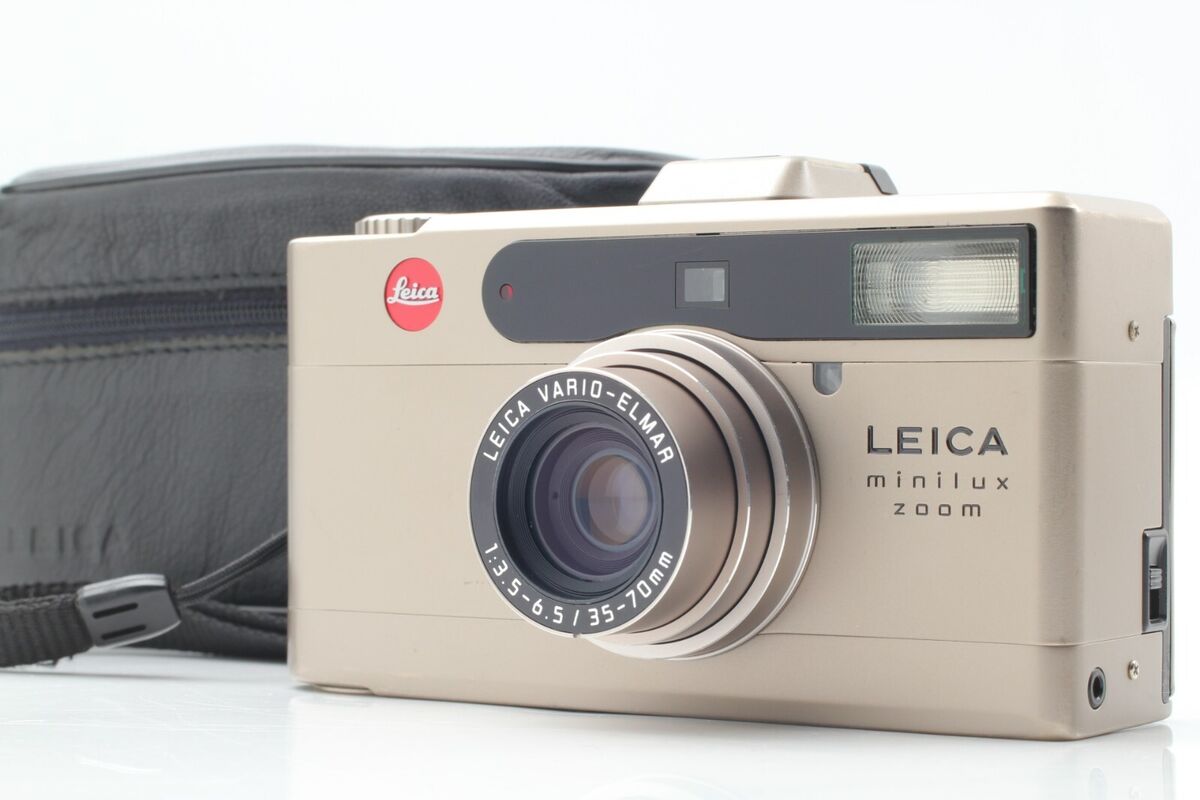
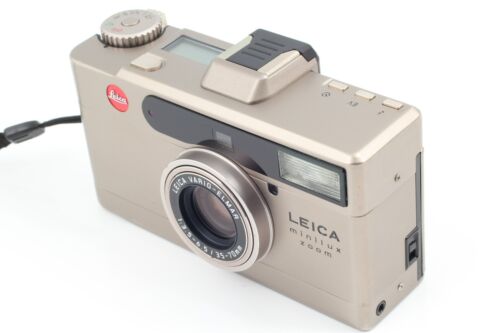
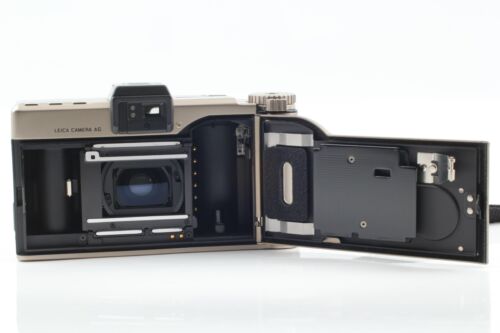
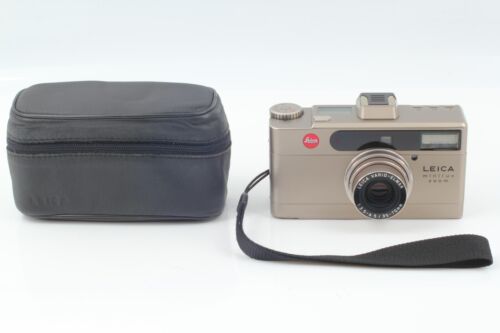

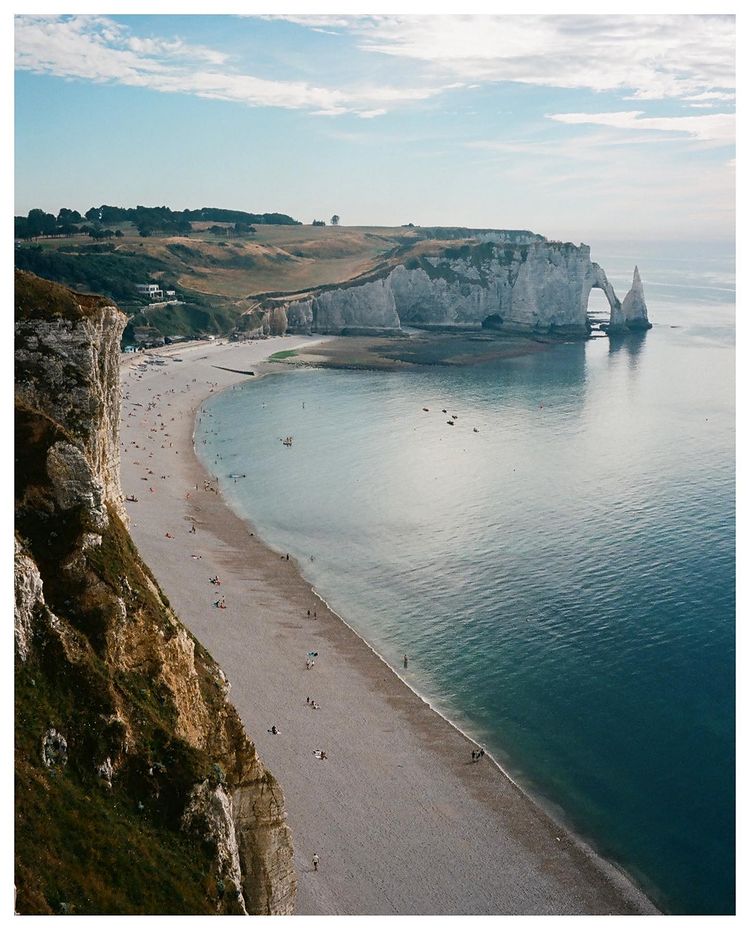
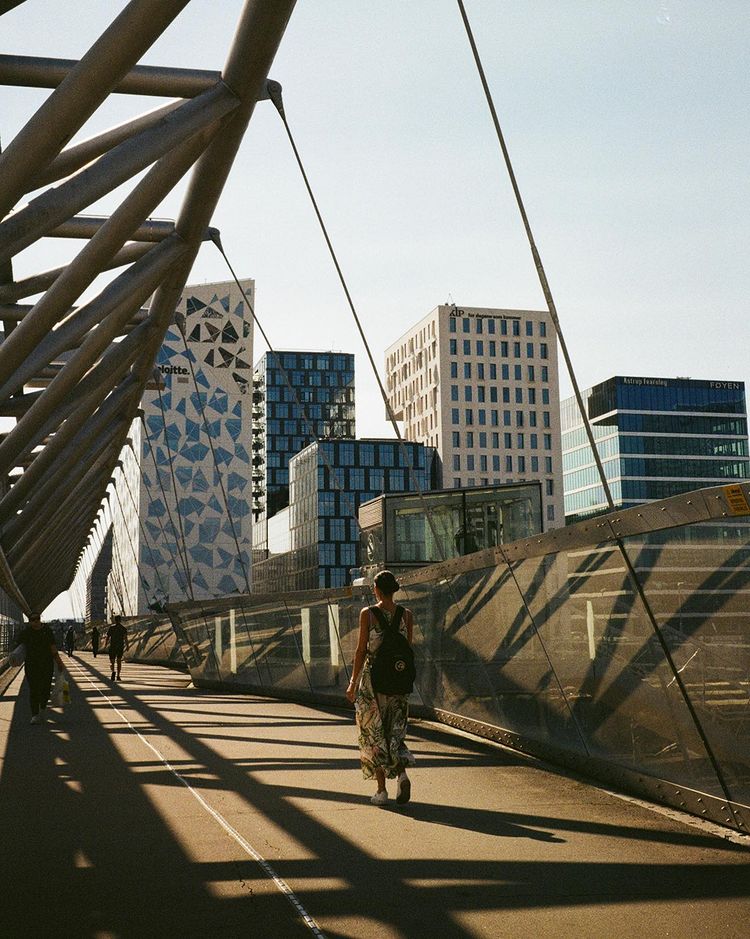
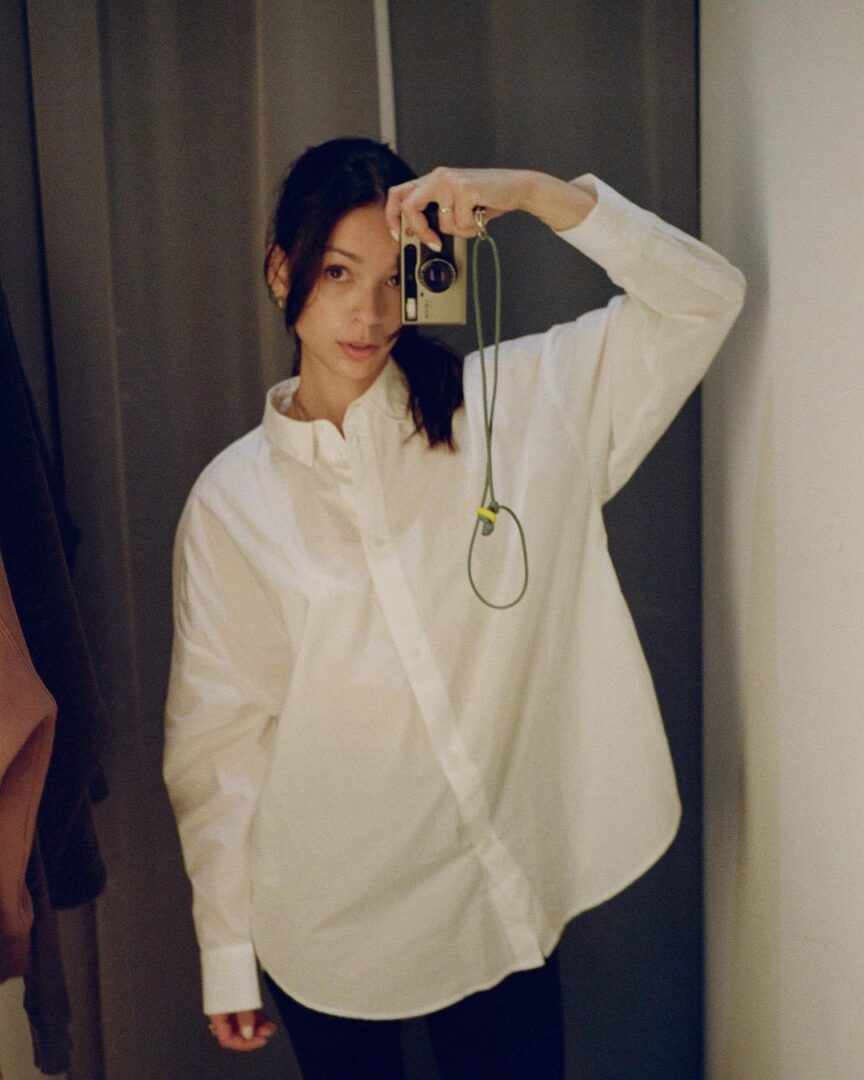
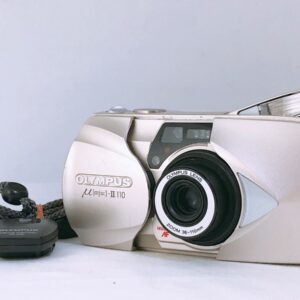
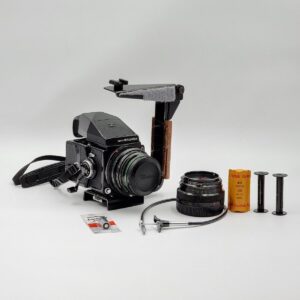
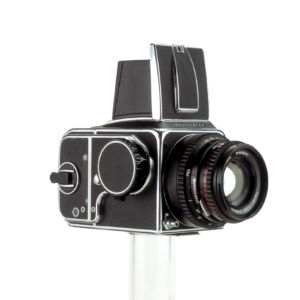
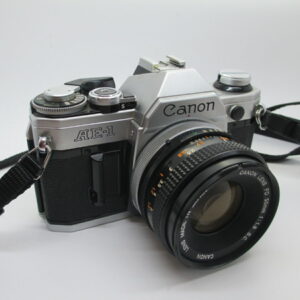
Reviews
There are no reviews yet.